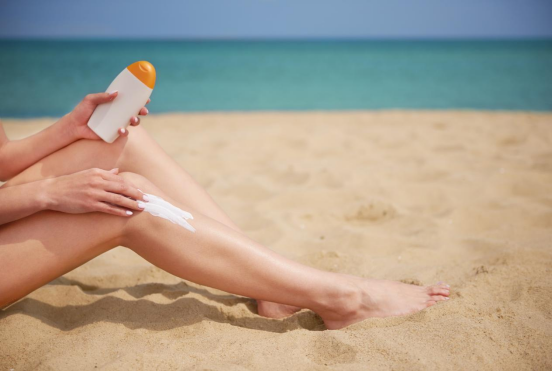
As consumers end up being progressively savvy about skin care, the dispute in between chemical and physical sunscreens remains to be a warm topic. While both offer crucial defense against the sunlight's hazardous ultraviolet (UV) rays, physical sun blocks are usually admired for their gentle yet efficient formula, making them a favored selection for those with delicate or responsive skin. The secret to their success lies in their energetic components, which produce a physical obstacle on the skin to shut out UV radiation. This article will explore the world of physical sunscreens, concentrating on their crucial active ingredients: zinc oxide and titanium dioxide.
Unlike their chemical equivalents, which absorb UV radiation and convert it into heat, physical sunscreens work by sitting on top of the skin to form a shield that deflects and scatters both UVA and UVB rays. This mechanism is why they are typically referred to as "sunblocks." The primary advantage of this method is its immediate effectiveness upon application and the lower possibility of causing skin irritation, as the ingredients are not absorbed right into the skin.
One of the most popular component in the physical sun block family members is Zinc Oxide. This giant mineral is special in its capability to offer broad-spectrum protection, meaning it effectively guards the skin versus the complete spectrum of UVA and UVB rays. UVA rays are accountable for premature aging, consisting of creases and fine lines, while UVB rays are the primary cause of sunburn. By supplying detailed security against both, zinc oxide plays a crucial duty in protecting against sun damages and minimizing the risk of skin cancer cells.
Moreover, zinc oxide is renowned for its soothing residential properties. It has been used for centuries to treat small skin irritabilities, rashes, and burns, a testimony to its gentle nature. This makes sunscreens created with zinc oxide a suitable option for individuals with delicate skin, acne-prone skin, or conditions like rosacea and dermatitis. Its non-comedogenic residential properties also suggest it is less most likely to obstruct pores, a typical problem for those with oily or mix skin.
The various other principal in the physical sunscreen group is Titanium Dioxide. This naturally happening mineral is an additional superb active ingredient for developing a physical obstacle versus UV rays. It is extremely reliable at reflecting and scattering UVB radiation, supplying durable security versus sunburn. While it offers great security throughout the UVB range, it is generally considered much less reliable versus long-wave UVA rays compared to zinc oxide.
Therefore, titanium dioxide is often used along with zinc oxide in sunscreen formulas. This mix develops a synergistic effect, improving the total broad-spectrum security of the item. By leveraging the toughness of both ingredients, formulators can produce a sun block that provides comprehensive and trustworthy defense against the sun's damaging rays. Like zinc oxide, titanium dioxide is additionally gentle on the skin and is an appropriate alternative for those with delicate or conveniently irritated skin.
In the last few years, innovations in formulation innovation have actually addressed one of the initial downsides of physical sunscreens: the thick, white cast they would usually leave on the skin. Modern formulations now use micronized or nano-sized particles of zinc oxide and titanium dioxide, which allows for a more cosmetically elegant application without compromising their protective capabilities. This means you can enjoy the mild, reliable defense of a physical sun block without the tell-tale white residue.
Finally, physical sun blocks supply a trusted and mild means to secure your skin from the sun. Their star components, zinc oxide and titanium dioxide, operate in harmony to produce a physical shield that deflects hazardous UVA and UVB rays. With their outstanding safety account and viability for all skin types, especially delicate skin, physical sun blocks are a powerful force in the fight versus sunlight damage. The following physical sunscreen ingredients time you are Surf the sunscreen aisle, consider the effective, safety, and skin-loving benefits of a physical solution.